JOURNEYS IN ART
Rebellion in full bloom – Penny Siopis transcends the divergent characters of filmmaker and painter
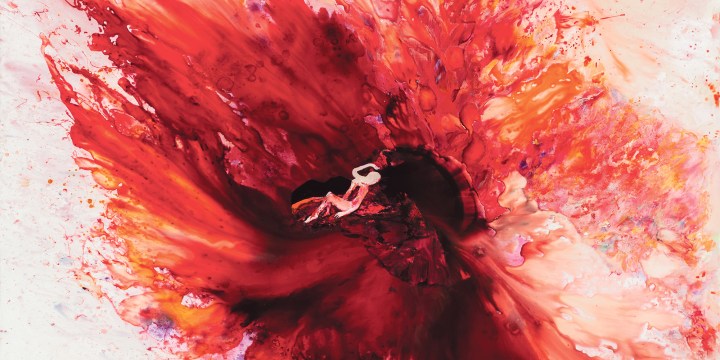
The celebrated South African artist has two exhibitions running, one in Cape Town and one in Johannesburg. They present a fascinating contrast and reflect on her evolution through career phases.
Artist Penny Siopis has 50 years’ experience; she has had more than 36 solo exhibitions and has participated internationally in more than 160 group shows. Collections include the Centre Pompidou in Paris, the Smithsonian Institution in Washington, Moderna Museet in Stockholm and the Tate in London.
Her painting career has had five periods, starting with 1980-84 and the Cake Paintings, for which she used unconventional implements, such as piping nozzles and other cake-decorating tools, to make high-relief impasto works.
At this time, conceptually, she was associating the traditional technique of impasto with that of conventional representation of the female body. The choice of using cake-decorating tools was also attached to the premise of the female body, first regarding conventional women’s duties and work. Second, it was commercialised as a commodity to be desired and bought.
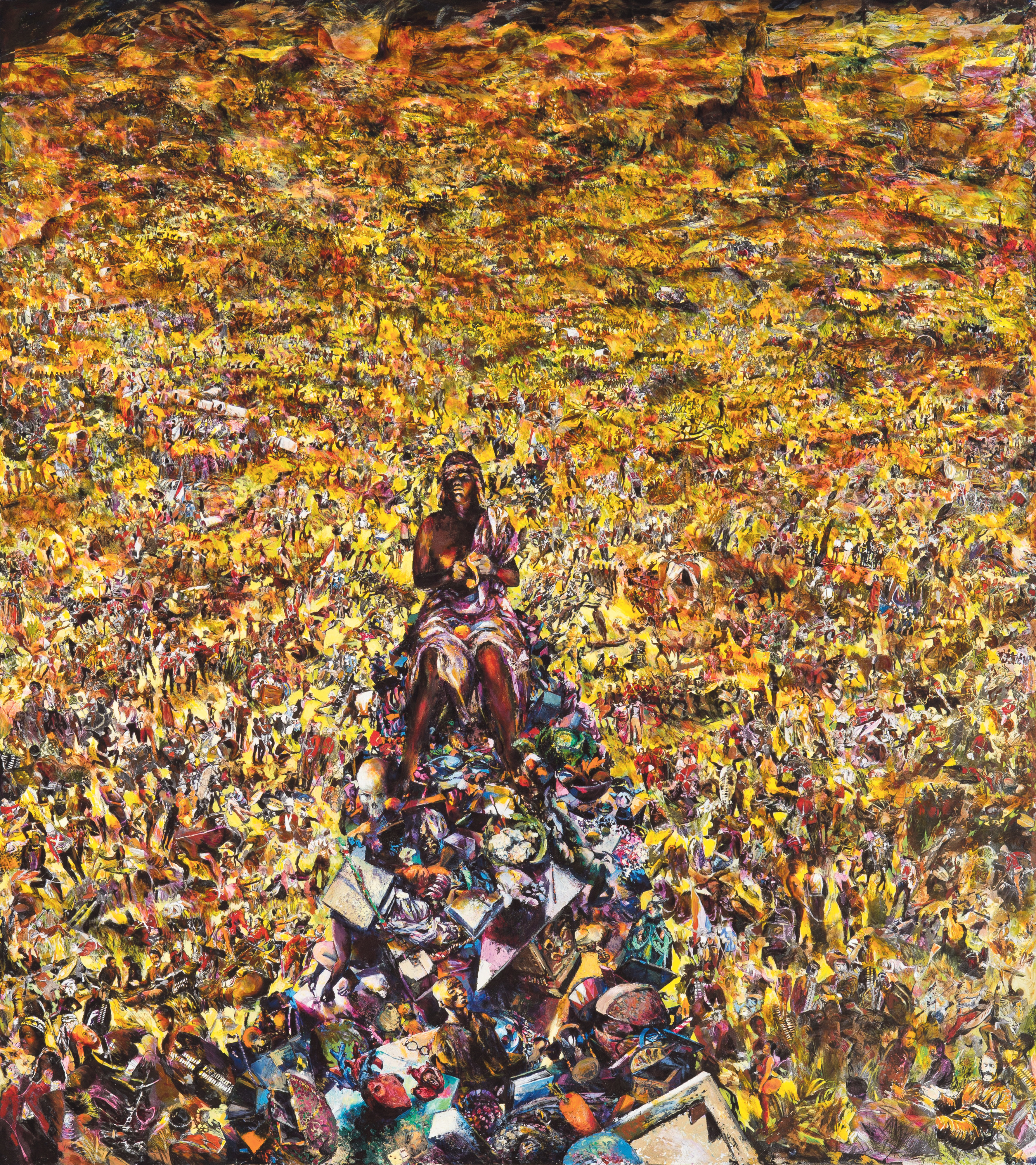
‘Patience on a Monument’ (1988), oil and collage on board.
Over time, the excessive impasto surface changes, with the outside layer drying long before the interior, led the surface to wrinkle and crack. In this manner, works of this first period served to reflect inevitable reality, sobering the viewer from the fallacy of idealising the female body.
The second period was History Paintings, from 1985 to 1995. Historical painting is considered the highest achievement in the European art tradition and Siopis created an almost definitive visual proposition with Patience on a Monument: ‘A History Painting’ (1988).
In the centre it has a female African native figure sitting in what is represented as a junkyard, filled only with a lot of images illustrative of colonial perceptions, misrepresentations and curated history.
Her work suggests the etiquette of two independent professionals.
The collage is assembled with torn-up history books. Considering that history is a tale told by the victors, the painting proposed the erasure of colonial triumph as maintained by its history books. In addition, it showcased the environment of what would be the new victor in South Africa, supposedly an African woman, because all the men were banned and in prison. A new regime would commence in a state of mess. Observing the condition of South Africa in 2023, Siopis’s painting was predictive and prescriptive for its time.
Jumping forward to the current period, of Ink and Glue Paintings, being exhibited at Stevenson Gallery in Johannesburg under the title Feral Figurations until 5 May, it must be noted that the artworks are abstract at first glance but, upon closer scrutiny, wild figures appear.
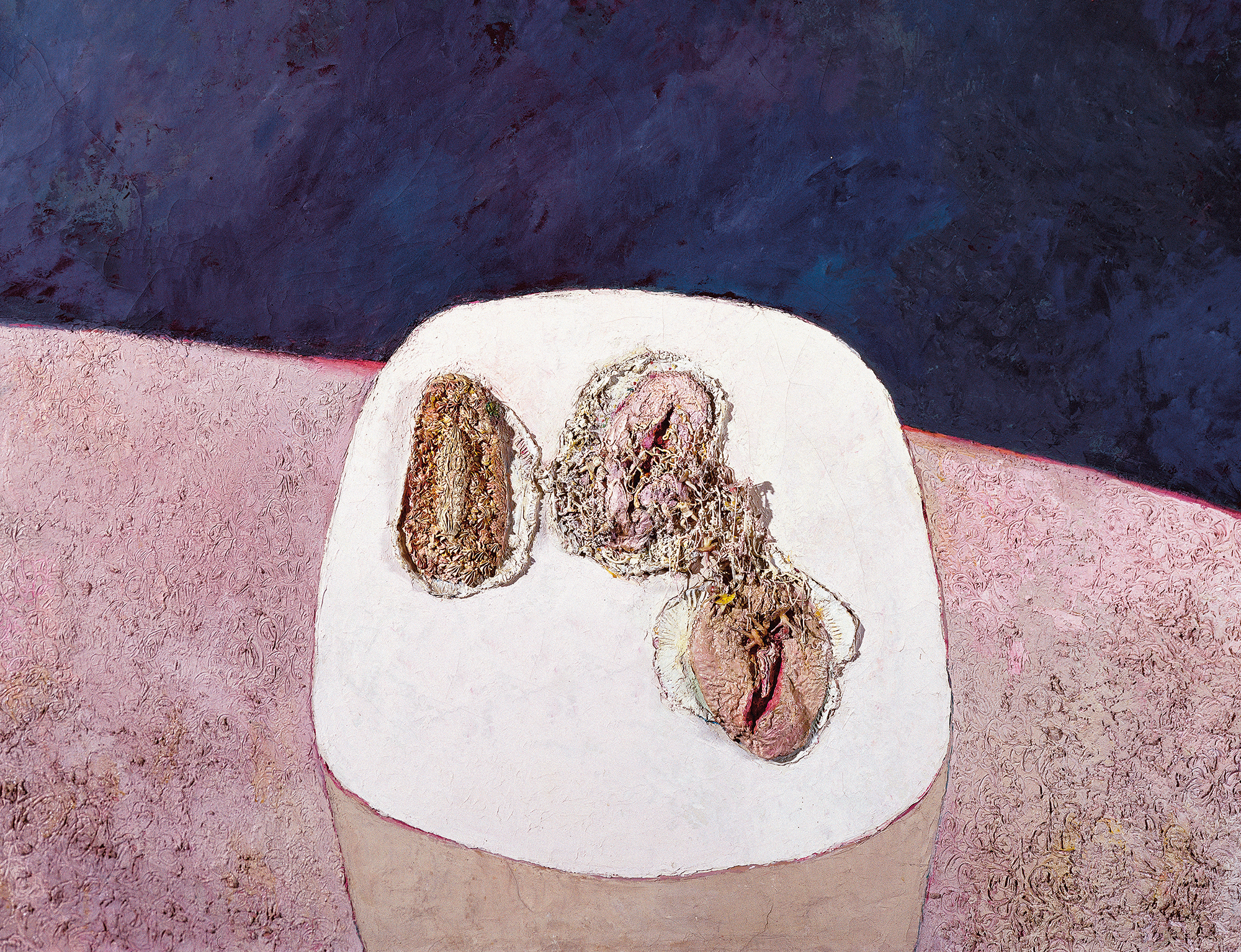
‘Embellishments’ (1982), oil and found objects on canvas.
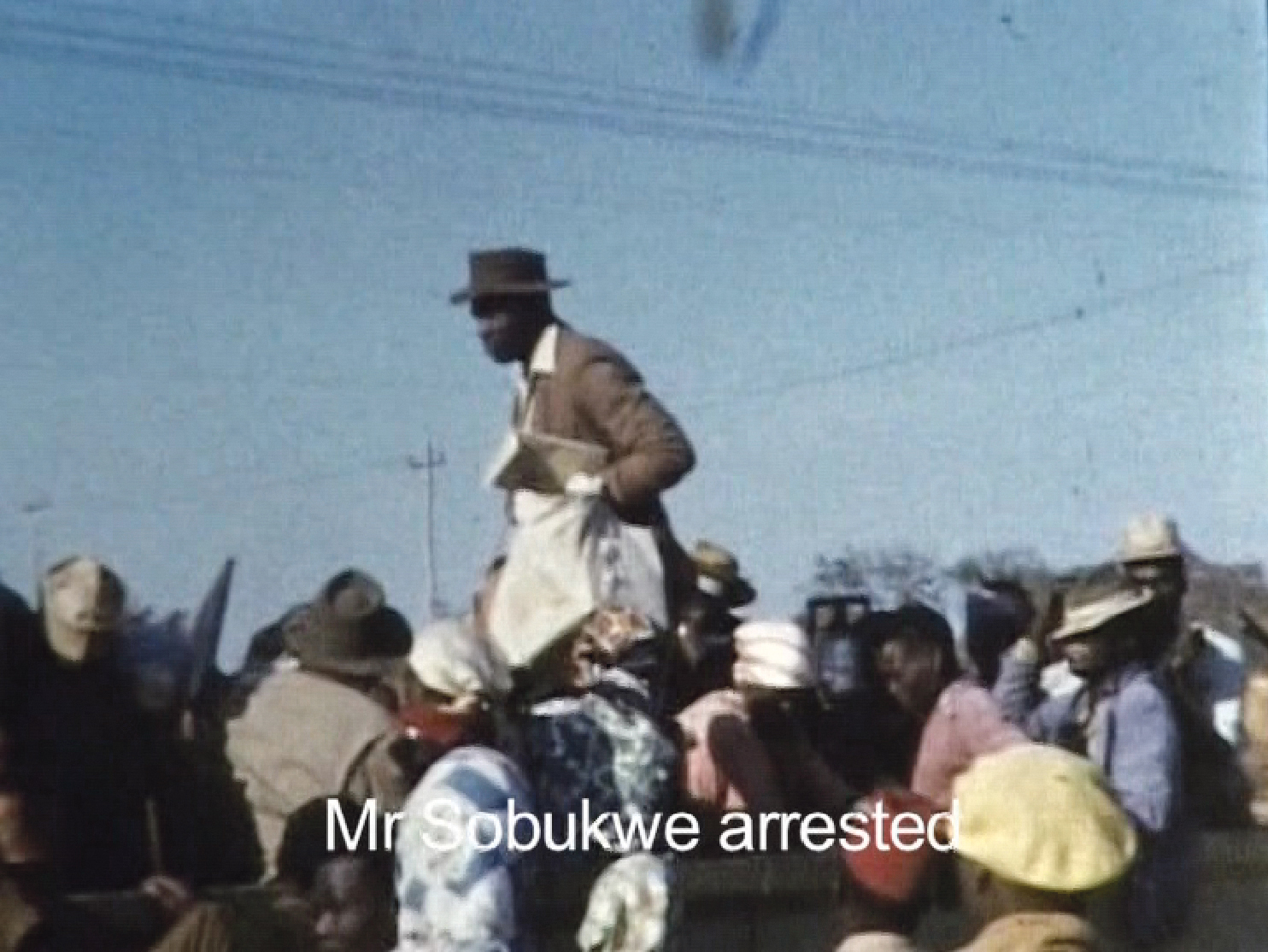
A still from the video ‘The Master is Drowning’ (2012).
The art style is a surface of a 15-year journey, inspired by the experimentation of chance and contingency, form and formlessness, explored through the appreciation of materiality. More often than not, artists lose the connection with the material they use. Siopis is maintaining her relationship with the material, allowing it to define new techniques of expression every time she engages with the act of image-making.
An assassin, a composer and a nun
As a multimedia artist, she also has a nine-film exhibition hosted by the Stevenson Gallery in Cape Town, titled Never the Same Water Twice (until 29 April).
In 2010, invited to take part in a group exhibition at Stevenson, she created the film Obscure White Messenger, the title taken from how former president Nelson Mandela described Dimitri Tsafendas, assassin of apartheid prime minister Hendrik Verwoerd. A biography by Harris Dousemetzis in 2019 labelled the same subject The Man Who Killed Apartheid.
The nine films in the Cape Town show are a contemporary archive in form and narrative. They include The Master is Drowning, 2012, a portrait of the wealthy Caucasian liberal who shot and wounded Verwoerd.
Communion, 2011 is a historical film about the Irish medical doctor and nun, Sister Aidan Quinlan, who died during an ANC Defiance Campaign protest in Duncan Village in the Eastern Cape in 1952. A 2021 book about the event by Mignonne Breier was called Bloody Sunday: The Nun, the Defiance Campaign and South Africa’s Secret Massacre.
Welcome Visitors! 2017 is about a Zimbabwean composer August Musarurwa, whose band with the longest name created a jazz subgenre, appreciated by the American jazz fraternity. Famous jazz artist Louis Armstrong visited him in Zimbabwe.
On 10 October 2021, the Greek Orthodox Church in Maputo commemorated the life and memory of Tsafendas with a service that coincided with the 200th anniversary of the Greek Revolution. Siopis, asked if her work assumed the same gesture, replied: “I was interested in micro narratives and the relationship of memory to history… then I did a huge amount of research and reading, with all aspects of archives I could find.”
Read more in Daily Maverick: Mozambique honours Dimitri Tsafendas, while SACP vows to erect tombstone
The Master is Drowning, 2012 features a remake by Miriam Makeba of the Vuyisile Mini song Basopa nants’ indonda emnyama, we Verwoerd (“Watch out Verwoerd, here comes the black man”). Mini was hanged by the apartheid regime.
Some of the films showcase a high level of conviction from Caucasian liberals in the anti-apartheid Struggle. Siopis explained: “I wasn’t trying to give voice to Caucasians in an obvious way, to say that they’re left out of history and they should be there, not in that way… The white liberal David Pratt was also tied up to British liberalism, another kind of imperialism at that time. Whereas Tsafendas was sort of a victim of all of that, he was a marginalised person, he wasn’t white, he was of mixed race, half Greek…”
An important element about multimedia artists is the ability to formidably develop a distinctive style for each medium. Siopis has advanced this ability into expertise. She transcends divergent characters of being a filmmaker and a painter. Her work suggests the etiquette of two independent professionals, and the two exhibitions can even be categorised as transdisciplinary.
The paintings in Johannesburg are a complete transition from the film work in Cape Town, from controversial archival history in moving picturesque to psychological experiments of a calming silent medium, expressed in abstract form and figuration.
She unfolded the mystery of abstraction in her own perception, that “abstraction can be representational, the same way the representative can be abstract”.
That statement is emblematic of her working formula, which is “openness” and “allowing material to inform the creator of its consistency, fluidity or solidity, after which a relationship is established based on a character of free will”, she said.
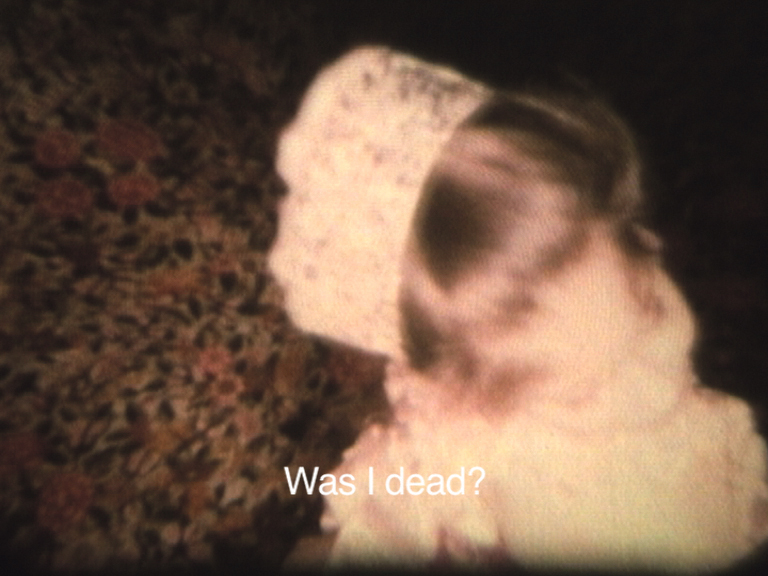
A still from the Penny Siopis video ‘Communion’ (2011), on show at the Stevenson Gallery in Cape Town.
While discussing the painting Rebellious Spring and how abstract art can be influenced by a collective unconscious, it was discovered that the title also has an indigenous Xhosa connotation, translated as Inkani ye Ntwaso, attached to the refinement of personality or ego, with relation to time or season. Her interpretation: “Firstly, I don’t love the term abstraction in art, abstract thought yes, but the word tends to be attached to art history as a style rather than a way of being.”
The concept of spring as a metaphor for new beginnings is majorly affixed to personal evolution with time; it follows all the chaos of confusion and loss; it is the joyous season of rebirth, colour and fresh air.
From an indigenous awareness, as mentioned above, spring is considered rebellious when it blooms in an unfamiliar pattern, because the new type of produce is yet to be understood. Which may also require a new set of utensils for consumption – a situation not strange in the work of Siopis, who has an eloquent history of painting periods and styles – proficient and evolutionary.
The psychoanalytical approach of her Feral Figurations permits the audience to experience the gallery as a space of reflection, refreshment and an acceptance of a new vision, openly. DM168
This story first appeared in our weekly Daily Maverick 168 newspaper, which is available countrywide for R25.
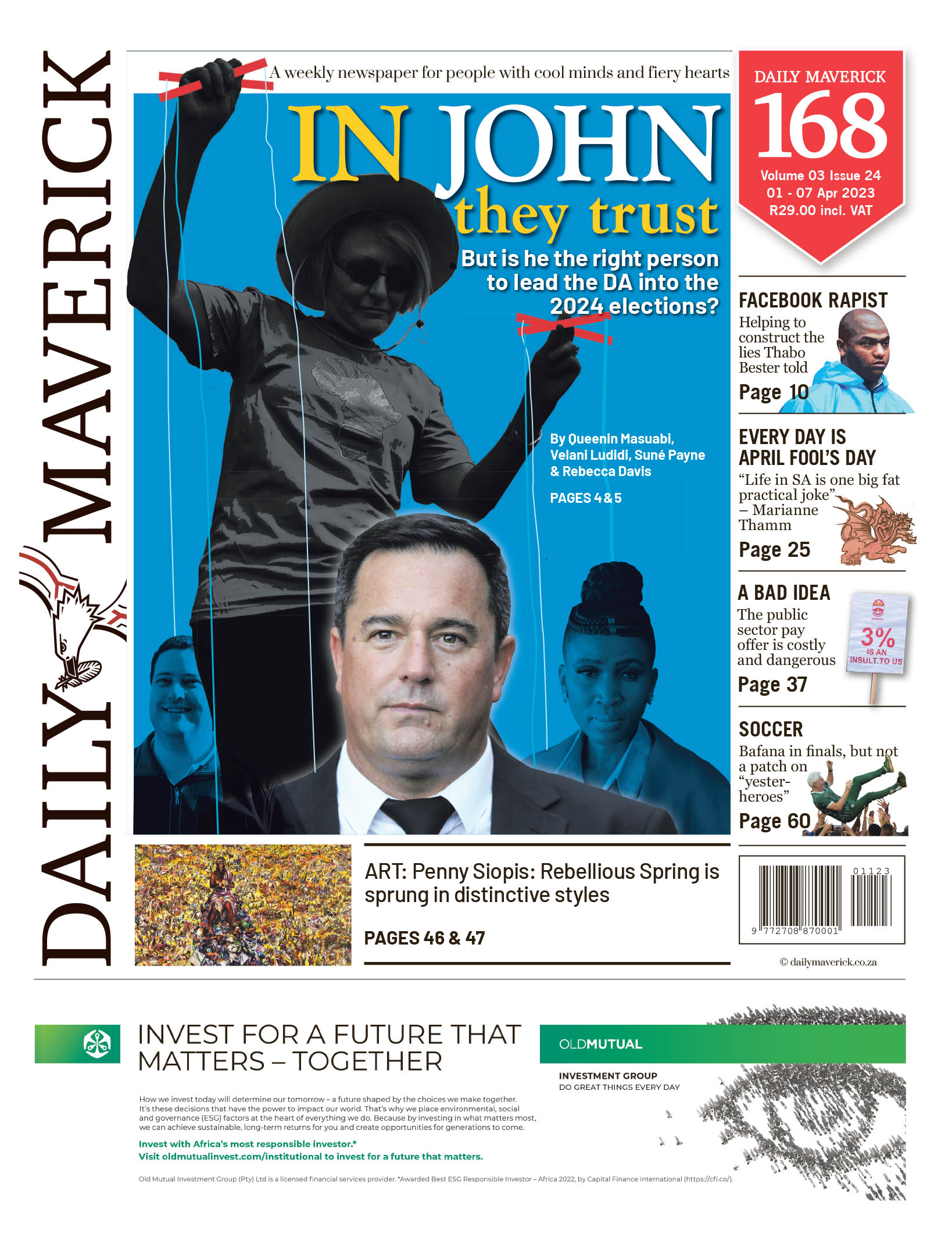



















 Become an Insider
Become an Insider
Comments - Please login in order to comment.